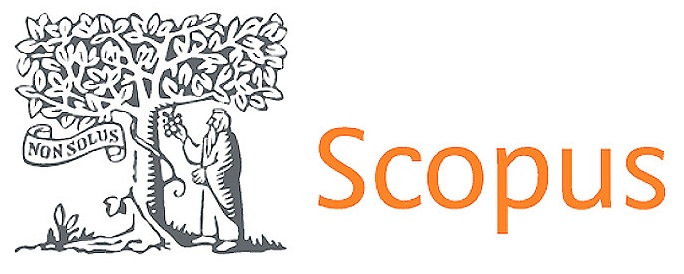Classification model for student attrition in a Peru public university
DOI:
https://doi.org/10.56294/sctconf2023175Keywords:
Automl, Machine Learning, Student Dropout, Higher Education, Data MiningAbstract
Information and communication technologies are playing a very important role in the different fields of knowledge; there is an increasing ability to identify patterns in the data of an organization; in this context, the study aimed to develop a classification model for student dropout by applying the autoML method of the H2Oai framework, taking into account socioeconomic and academic characteristics of students in order for authorities to make decisions in a timely manner. The methodology was technological, propositional level, incremental innovation, temporal scope, synchronous; the data collection was prospective, a 20-item questionnaire was applied to 237 graduate students of master’s degree programs in education. The research resulted in a supervised automatic learning model, Gradient Boosting Machine (GBM), to classify student desertion, identifying the main associated factors that influence desertion, obtaining a Gini coefficient of 92,20 %, AUC of 96,10 % and a LogLoss of 24,24 %.
References
Bean J, Metzner B. A conceptual model of nontraditional undergraduate student attrition. Review of Educational Research, Washington. 1985; 55(4): 485-540.
Dwi M, Prasetya A, Pujianto U. Technology acceptance model of studentability and tendency classification system. Bulletin of Social Informatics Theory and Application. 2018; 2(2): 47–57. Disponible en: https://doi.org/10.31763/businta.v2i2.113
He X, Zhao K, Chu X. AutoML: A survey of the state-of-the-art. Knowledge- Based Systems. 2020; 106622. Disponible en: https://doi:10.1016/j.knosys.2020.106622
Khuong, H. Evaluation of a conceptual model of student retention at a public urban commuter university. e-Commons. Chicago: Loyola Univerty Chicago, 2014. (Dissertations 1092). 2016.
Kodelja Z. Is Machine Learning Real Learning? Robotisation, Automatisation, the End of Work and the Future of Education. CEPS Journal. 2019; 9(3). Disponible en: https://doi.org/10.26529/cepsj.709
Kuh G, Love P. A cultural perspective on student departure. In: BRAXTON, John (Ed.). Reworking the student departure puzzle. Nashville: Vanderbilt University Press; 2000.
Melgar A S, Garay-Argandoña R, Aranda E A E, Hernández R M. Management risk factors in educational institutions and their impact on peruvian student desertion. Elementary Education Online. 2000; 19(4): 226–233. Disponible en: https://doi.org/10.17051/ILKONLINE.2020.04.124
Nagarajah T, Poravi G. A Review on Automated Machine Learning (AutoML) Systems. 2019 IEEE 5th International Conference for Convergence in Technology (I2CT); 2019. Disponible en: https://doi:10.1109/i2ct45611.2019.9033810
PRATHER J, HAND C. Retention of non-traditional students. In: annual meeting of the southern association for institutional research, 1986, Pipestem, West Virginia. Anales… Pipestem: [s. n.], 1986. p. 1-19.
Rincón Soto I B. Comprensión holística de la educación y economía. [2011, septiembre 27]. Disponible en: https://www.gestiopolis.com/comprension-holistica-educacion-economia/
Rincón Soto I B. Formación Psicopedagógica De Los Docentes Universitarios. Cuadernos de Educación y Desarrollo, Servicios Académicos Intercontinentales SL. 2010; (18).
Rincon Soto IB, Marín-Rodriguez WJ, Baldeos-Ardían LA, Líoo-Jordán F de M, Villanueva-Cadenas DI, Soledispa-Cañarte BJ, Soledispa-Cañarte PA. Formación docente, trabajo, profesión en el contexto de la pandemia y post-pandemia. Salud, Ciencia y Tecnología [Internet]. 23 de marzo de 2023 [citado 15 de abril de 2023]; 3:338. Disponible en: https://revista.saludcyt.ar/ojs/index.php/sct/article/view/338
Samuel A. Some studies in machine learning using the game of checkers. IBM Journal of Research and Development. 1959; 44(1): 211-229. Disponible en: https://doi:10.1147/rd.441.0206
Truong A, Walters A, Goodsitt J, Hines K, Bruss C B, Farivar R. Towards Automated Machine Learning: Evaluation and Comparison of AutoML Approaches and Tools. 2019 IEEE 31st International Conference on Tools with Artificial Intelligence (ICTAI); 2019. Disponible en: https://doi:10.1109/ictai.2019.00209
Vakhrushev A, Ryzhkov A, Savchenko M, Simakov D, Damdinov R, Tuzhilin A. LightAutoML: AutoML Solution for a Large Financial Services Ecosystem. Choice Reviews Online. 2021; 45(02): 45–0602—45–0602. Disponible en: https://doi.org/10.5860/choice.45-0602
WYLIE J. Non-traditional student attrition in higher education: a theoretical model of separation, disengagement then dropout. In: australian association for research in education, 2005, Coldstream. Anales… Coldstream: [s. n.], 2005. Conference papers.
Xu W, Li W. Granular Computing Approach to Two-Way Learning Based on Formal Concept Analysis in Fuzzy Datasets. IEEE Transactions on Cybernetics. 2014; 46(2): 366–379. Disponible en: https://doi:10.1109/tcyb.2014.2361772
Zöller M, Huber, M. Benchmark and Survey of Automated Machine Learning Frameworks. Journal of Artificial Intelligence Research. 2021; 70: 409–472. Disponible en: https://doi.org/10.1613/jair.1.11854
Downloads
Published
Issue
Section
License
Copyright (c) 2023 Henry Villarreal Torres, William Marín Rodriguez, Julio Ángeles Morales, Jenny Cano Mejía, Carmen Mejía Murillo (Author)

This work is licensed under a Creative Commons Attribution 4.0 International License.
The article is distributed under the Creative Commons Attribution 4.0 License. Unless otherwise stated, associated published material is distributed under the same licence.



